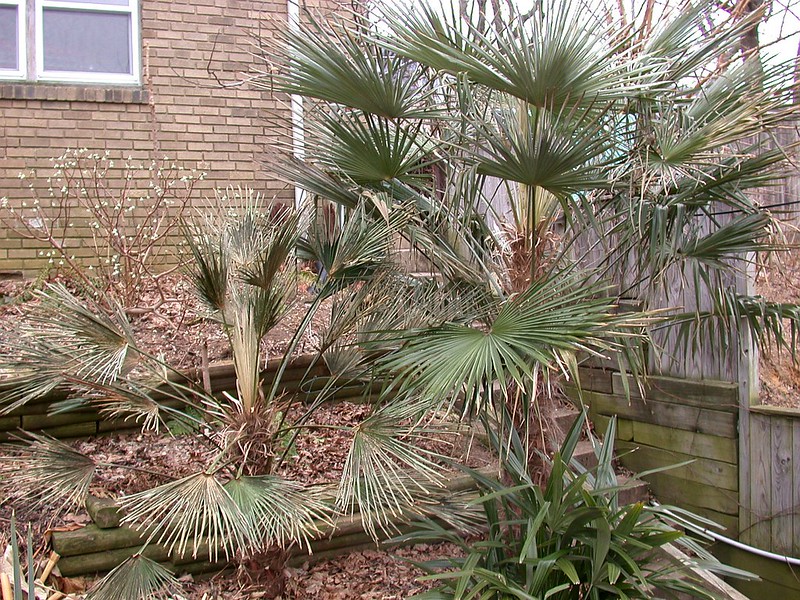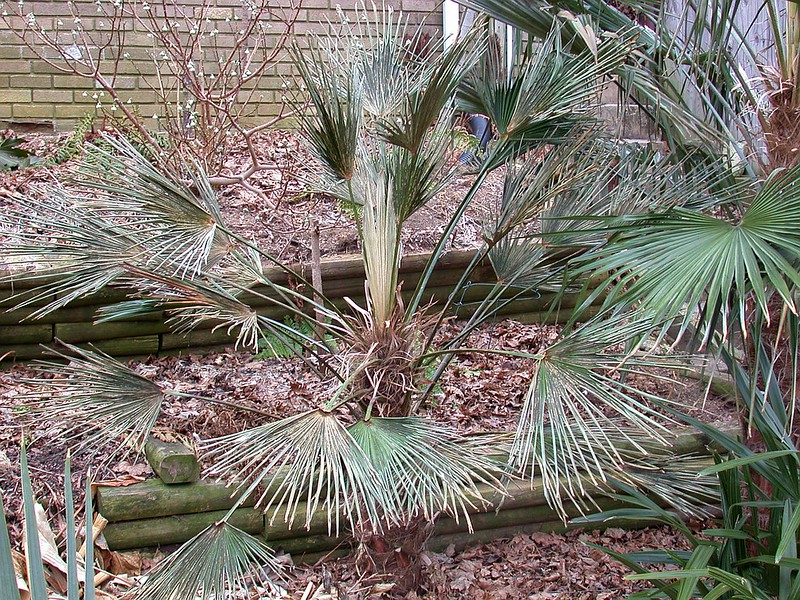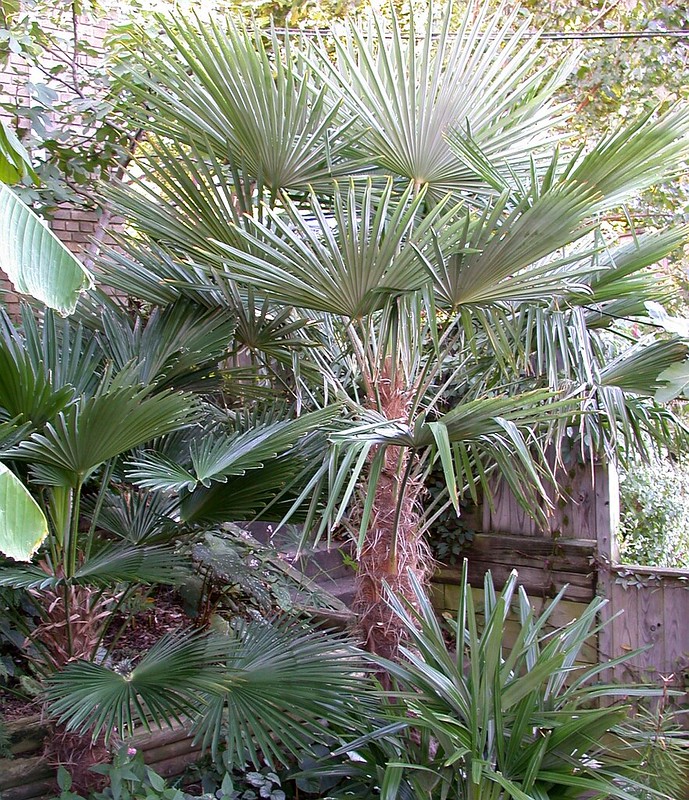
Trachycarpus wagnerianus (left), T. fortunei "Nainital" (right)
Not all windmill palms are created equal. In fact there seems to be quite a bit of variation in cold hardiness among them, with some selections or strains reputed to be hardier than others. The above photo illustrates very clearly such a difference. Many sources claim that "waggies"--Trachycarpus wagnerianus, which is probably no more than a dwarf version of T. fortunei that arose in cultivation--are among the hardier windmill palms. In fact, that's why I ordered seeds of this species 13 years ago, when I was just starting to get into hardy palms. But after this winter, I'm not so sure about that.
My waggie was the first palm to show freeze damage, after a low of 5 degrees in early January. Trachycarpus fortunei "Nainital"--originally (mis)identified as T. takil--growing right next to it shrugged off that cold. Although both palms initially had that freeze-dried look, and both looked better after a day above freezing, after a few more days the waggie had obvious damage whereas the Nainital looked nearly untouched. It took two more cold waves, with temperatures remaining below freezing for much longer periods, before the Nainital showed significant damage, and it still doesn't look nearly as bad as the waggie. In fact the second and third cold waves completely fried the waggie. The difference is especially apparent in this closeup of the waggie, showing a leaf of Nainital on the right:

Trachycarpus wagnerianus
Aside from the fact that I grew the waggie from seed myself, and that it has been in the ground since 2003 (with no protection since 2005), this damage is disappointing because the palm looked so nice last year, and was finally starting to form a trunk. Here are the same two palms last September:
At this point I'm expecting to lose the waggie, but I'm optimistic that the Nainital will pull through. As an aside, the damage to the Nainital's foliage seems to be worst on the sunny side of the palm. These photos show the shady side, where the leaves seem greener and less desiccated. Has anybody else noticed similar patterns of damage in their windmill palms?


To continue the thought from a comment I made on your following post - the windmills in VA beach were very rough looking, although the day after their surprise 10 inches of snow most of the town had a low in the single digits (ocean front held around 18-20 degrees). The ones most protected from wind (same with sabal, and butia) were the best looking, and the ones boardwalk/full on ocean front were terribly burnt looking (all palm species). I've read that other evergreen subtropicals like the southern magnolia will be worse off during a sever freeze if the morning sun strikes them (and I can attest to that, the Magnolias in Silver Spring are mostly burnt on their east and south side, not the north side). I wonder if the same damaging effect happens with other subtropical evergreens?
ReplyDelete